Calcium Fluoride Bi-Convex Lenses, Uncoated
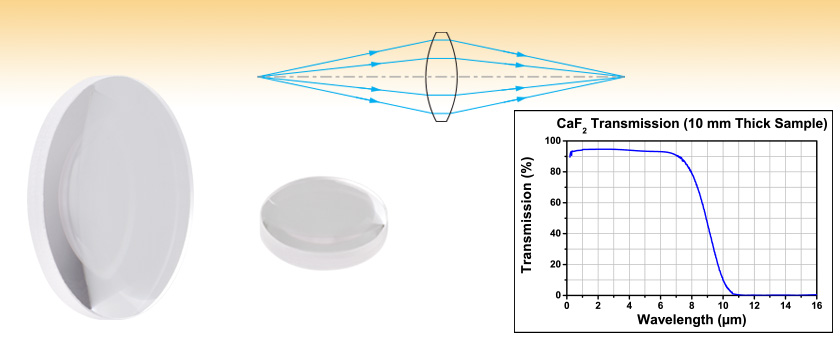
- Ideal for use with Excimer Lasers
- Choose from Ø1/2" or Ø1"
LB5284
(Ø1")
LB5922
(Ø1/2")

Please Wait
| Common Specifications | |
|---|---|
| Substrate Material | Vacuum-Grade Calcium Fluoridea |
| Wavelength Range | 0.18 - 8.0 μm |
| Diameter Tolerance | +0.00/-0.10 |
| Thickness Tolerance | ±0.1 mm |
| Focal Length Tolerance | ±1% |
| Surface Quality | 40-20 (Scratch-Dig) |
| Spherical Surface Powerb | 3λ/2 |
| Spherical Surface Irregularity (Peak to Valley) |
λ/2 |
| Centration | ≤3 arcmin |
| Clear Aperture | >90% of Diameter |
| Design Wavelength | 588 nm |
| Click on the red Document icon next to the item numbers below to access the Zemax file download. Our entire Zemax Catalog is also available. |
Features
- Vacuum-Grade Calcium Fluoride Substrate
- Ø1/2" and Ø1" Versions Available
- Uncoated for use in the 0.18 - 8.0 μm
- Focal Lengths from 15.0 mm to 200.0 mm
Thorlabs' Ø1/2" and Ø1" Calcium Fluoride (CaF2) Bi-Convex Lenses, which offer high transmission from 0.18 µm to 8.0 μm, are available uncoated or with a broadband AR coating optimized for the 2 µm to 5 μm spectral range.
CaF2 is commonly used for applications requiring high transmission in the infrared and ultraviolet spectral ranges. Its extremely high laser damage threshold makes it useful for use with excimer lasers. The material exhibits a low refractive index, varying from 1.35 to 1.51 within its usage range of 180 nm to 8.0 μm. Calcium fluoride is also fairly chemically inert and offers superior hardness compared to its barium fluoride, magnesium fluoride, and lithium fluoride cousins.
Bi-convex lenses are popular for many finite imaging applications. Both surfaces are spherical and have the same radius of curvature, minimizing aberrations in situations where the object and image distances are equal or nearly equal. As a guideline, bi-convex lenses are the best choice for minimizing aberrations if the conjugate ratio (object distance : image distance) is between 5:1 and 1:5. Outside this range, plano-convex lenses are usually preferred.
| Selection Guide |
|---|
| Calcium Fluoride Lenses |
| Other MIR Lenses |
| Other Spherical Singlets |
| Plano-Convex |
| Bi-Convex |
| Best Form |
| Plano-Concave |
| Bi-Concave |
| Positive Meniscus |
| Negative Meniscus |
Total Transmission of Optic (CaF2 Substrate, Uncoated)
The table below gives the approximate theoretical transmission of these uncoated optics for a few select wavelengths in the 0.18 - 8.0 μm range. To see an excel file that lists all measured transmission values for this wavelength range, please click here.
| Wavelength (μm) | Total Transmission |
|---|---|
| 0.2 | 0.910 |
| 0.4 | 0.929 |
| 0.6 | 0.935 |
| 0.8 | 0.937 |
| 1.0 | 0.938 |
| 1.2 | 0.938 |
| 1.4 | 0.938 |
| 1.6 | 0.938 |
| 1.8 | 0.939 |
| 2.0 | 0.939 |
| Wavelength (μm) | Total Transmission |
|---|---|
| 2.2 | 0.939 |
| 2.4 | 0.939 |
| 2.6 | 0.940 |
| 2.8 | 0.940 |
| 3.0 | 0.940 |
| 3.2 | 0.941 |
| 3.4 | 0.941 |
| 3.6 | 0.941 |
| 3.8 | 0.942 |
| 4.0 | 0.942 |
| Wavelength (μm) | Total Transmission |
|---|---|
| 4.2 | 0.943 |
| 4.4 | 0.943 |
| 4.6 | 0.943 |
| 4.8 | 0.944 |
| 5.0 | 0.945 |
| 5.2 | 0.945 |
| 5.4 | 0.945 |
| 5.6 | 0.946 |
| 5.8 | 0.946 |
| 6.0 | 0.947 |
| Wavelength (μm) | Total Transmission |
|---|---|
| 6.2 | 0.947 |
| 6.4 | 0.947 |
| 6.6 | 0.948 |
| 6.8 | 0.949 |
| 7.0 | 0.949 |
| 7.2 | 0.948 |
| 7.4 | 0.947 |
| 7.6 | 0.946 |
| 7.8 | 0.945 |
| 8.0 | 0.944 |
Wavelength-Dependent Focal Length Shift
The paraxial focal length of a lens is wavelength dependent. The focal length listed below for a given lens corresponds to the value at the design wavelength (i.e., the focal length at 588 nm). Since CaF2 offers high transmission from 0.18 - 8.0 µm, users may wish to use these lenses at other popular wavelengths. Click on the icons below to view theoretically-calculated focal length shifts for wavelengths within the 0.18 - 8.0 µm range.
| Recommended Mounting Options for Thorlabs Lenses | ||
|---|---|---|
| Item # | Mounts for Ø2 mm to Ø10 mm Optics | |
| Imperial | Metric | |
| (Various) | Fixed Lens Mounts and Mini-Series Fixed Lens Mounts for Small Optics, Ø5 mm to Ø10 mm | |
| (Various) | Small Optic Adapters for Use with Standard Fixed Lens Mounts, Ø2 mm to Ø10 mm | |
| Item # | Mounts for Ø1/2" (Ø12.7 mm) Optics | |
| Imperial | Metric | |
| LMR05 | LMR05/M | Fixed Lens Mount for Ø1/2" Optics |
| MLH05 | MLH05/M | Mini-Series Fixed Lens Mount for Ø1/2" Optics |
| LM05XY | LM05XY/M | Translating Lens Mount for Ø1/2" Optics |
| SCP05 | 16 mm Cage System, XY Translation Mount for Ø1/2" Optics | |
| (Various) | Ø1/2" Lens Tubes, Optional SM05RRC Retaining Ring for High-Curvature Lenses (See Below) |
|
| Item # | Mounts for Ø1" (Ø25.4 mm) Optics | |
| Imperial | Metric | |
| LMR1 | LMR1/M | Fixed Lens Mount for Ø1" Optics |
| LM1XY | LM1XY/M | Translating Lens Mount for Ø1" Optics |
| ST1XY-S | ST1XY-S/M | Translating Lens Mount with Micrometer Drives (Other Drives Available) |
| CXY1A | 30 mm Cage System, XY Translation Mount for Ø1" Optics | |
| (Various) | Ø1" Lens Tubes, Optional SM1RRC Retaining Ring for High-Curvature Lenses (See Below) |
|
| Item # | Mount for Ø1.5" Optics | |
| Imperial | Metric | |
| LMR1.5 | LMR1.5/M | Fixed Lens Mount for Ø1.5" Optics |
| (Various) | Ø1.5" Lens Tubes, Optional SM1.5RR Retaining Ring for Ø1.5" Lens Tubes and Mounts |
|
| Item # | Mounts for Ø2" (Ø50.8 mm) Optics | |
| Imperial | Metric | |
| LMR2 | LMR2/M | Fixed Lens Mount for Ø2" Optics |
| LM2XY | LM2XY/M | Translating Lens Mount for Ø2" Optics |
| CXY2 | 60 mm Cage System, XY Translation Mount for Ø2" Optics |
|
| (Various) | Ø2" Lens Tubes, Optional SM2RRC Retaining Ring for High-Curvature Lenses (See Below) |
|
| Item # | Adjustable Optic Mounts | |
| Imperial | Metric | |
| LH1 | LH1/M | Adjustable Mount for Ø0.28" (Ø7.1 mm) to Ø1.80" (Ø45.7 mm) Optics |
| LH2 | LH2/M | Adjustable Mount for Ø0.77" (Ø19.6 mm) to Ø2.28" (Ø57.9 mm) Optics |
| VG100 | VG100/M | Adjustable Clamp for Ø0.5" (Ø13 mm) to Ø3.5" (Ø89 mm) Optics |
| SCL03 | SCL03/M | Self-Centering Mount for Ø0.15" (Ø3.8 mm) to Ø1.77" (Ø45.0 mm) Optics |
| SCL04 | SCL04/M | Self-Centering Mount for Ø0.15" (Ø3.8 mm) to Ø3.00" (Ø76.2 mm) Optics |
| LH160C | LH160C/M | Adjustable Mount for 60 mm Cage Systems, Ø0.50" (Ø13 mm) to Ø2.00" (Ø50.8 mm) Optics |
| SCL60CA | SCL60C/M | Self-Centering Mount for 60 mm Cage Systems, Ø0.15" (Ø3.8 mm) to Ø1.77" (Ø45.0 mm) Optics |
Mounting High-Curvature Optics
Thorlabs' retaining rings are used to secure unmounted optics within lens tubes or optic mounts. These rings are secured in position using a compatible spanner wrench. For flat or low-curvature optics, standard retaining rings manufactured from anodized aluminum are available from Ø5 mm to Ø4". For high-curvature optics, extra-thick retaining rings are available in Ø1/2", Ø1", and Ø2" sizes.
Extra-thick retaining rings offer several features that aid in mounting high-curvature optics such as aspheric lenses, short-focal-length plano-convex lenses, and condenser lenses. As shown in the animation to the right, the guide flange of the spanner wrench will collide with the surface of high-curvature lenses when using a standard retaining ring, potentially scratching the optic. This contact also creates a gap between the spanner wrench and retaining ring, preventing the ring from tightening correctly. Extra-thick retaining rings provide the necessary clearance for the spanner wrench to secure the lens without coming into contact with the optic surface.
| Posted Comments: | |
user
(posted 2021-07-28 10:03:52.207) Hello,
could you offer the larger focal lengths (e.g. 75 mm) also in half inch diameter?
Thanks! YLohia
(posted 2021-07-29 01:58:02.0) Thank you for contacting Thorlabs. Custom optics can be requested by emailing your local Thorlabs Tech Support group (in your case europe@thorlabs.com). We will discuss the possibility of offering this customization directly. Chu Lun Alex Leung
(posted 2020-06-15 19:09:42.583) Dear officer,
Do you have the numerical aperture of these products?
Regards,
Alex YLohia
(posted 2020-06-17 08:47:18.0) Hello Alex, we don't spec the NA of these bi-convex lenses because these are not meant to be used for collimation or in infinite conjugate systems. The NA is really only defined under these conditions. md.n.islam
(posted 2018-06-13 13:49:29.753) Hi,
I am looking for NA of the LB5774 lens.
Thanks. YLohia
(posted 2018-06-13 05:10:33.0) Hello, we don't spec the NA of bi-convex lenses such as LB5774 because these are not meant to be used for collimation or in infinite conjugate systems. The NA is really only defined under these conditions. mg9420
(posted 2016-07-25 14:41:02.913) Would I like to know what is damage threshold of the lens LB5766? |


 Products Home
Products Home







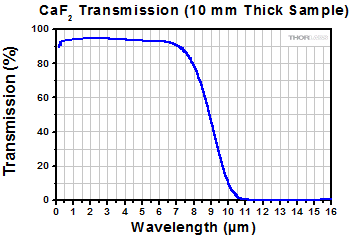
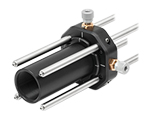
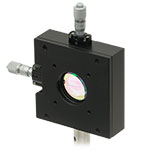
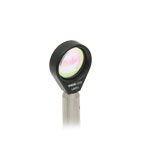

 CaF2, Uncoated
CaF2, Uncoated